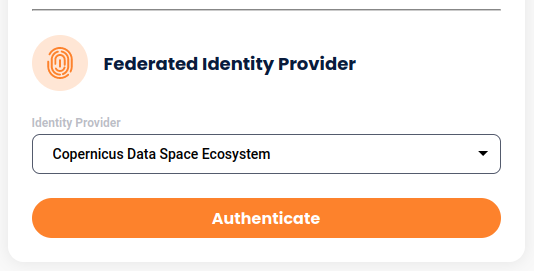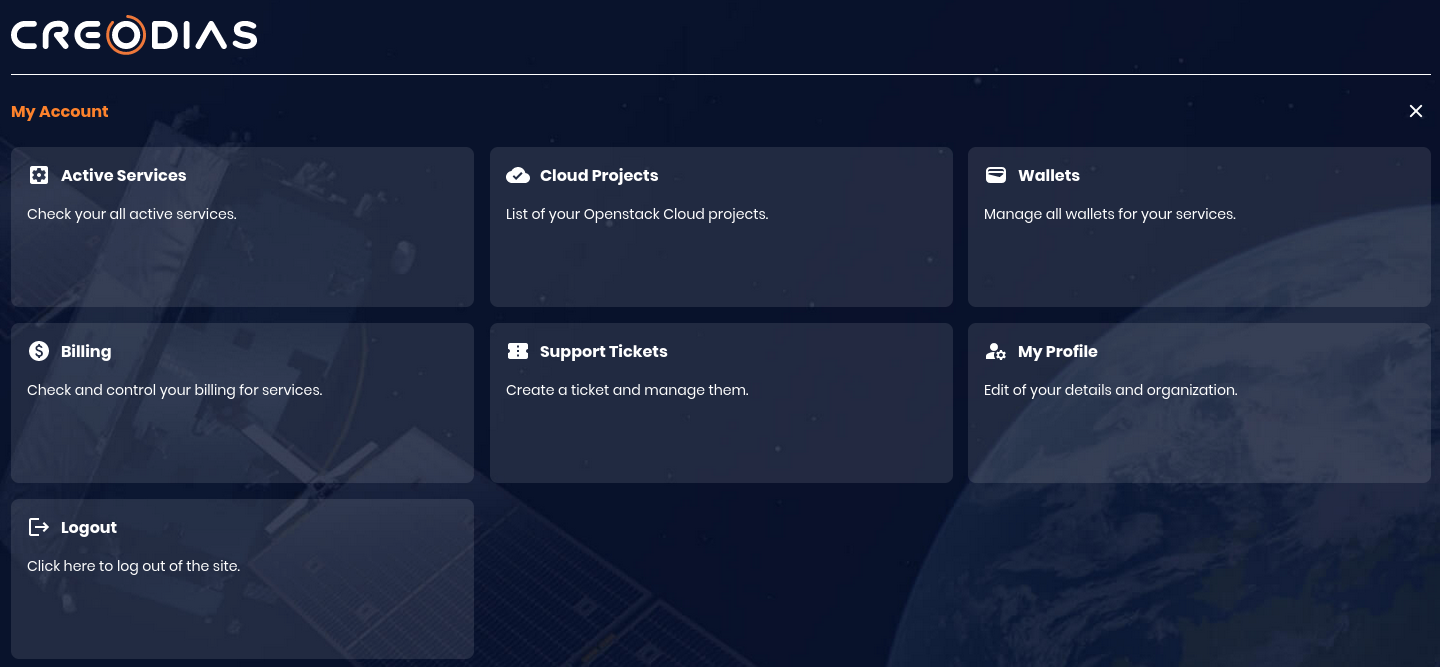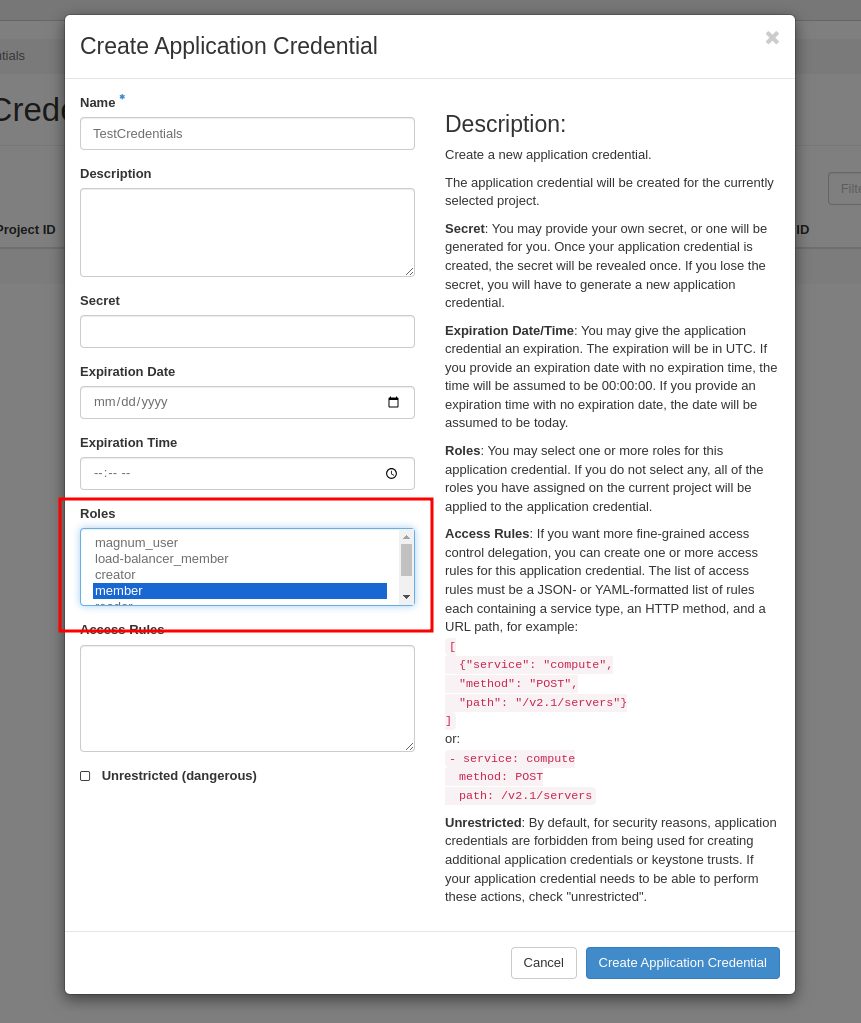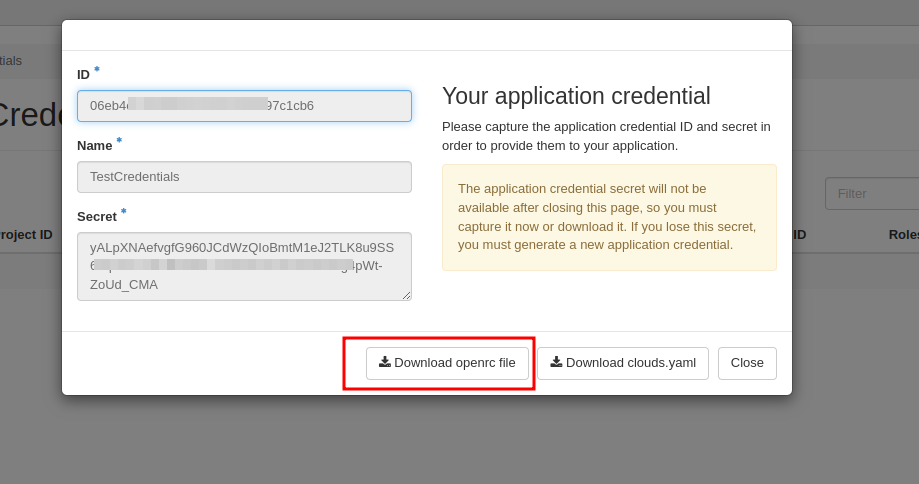Create S3 bucket and use it in Sentinel Hub requests
Step 1: Login to CREODIAS using CDSE account
In order to access the CREODIAS environment, you can use an already registered account in the Copernicus Data Space Ecosystem.
Go to CREODIAS website: https://creodias.eu/ and select Sign in button:

You will be redirected to the login window, where you will able to use the CDSE login. From the “Identity Provider” field select “Copernicus Data Space Ecosystem” and then select “Authenticate” button to log in to CREODIAS using a CDSE account:

Step 2: Register new organization
After logging in, you will be redirected to the CREODIAS website. To access the CREODIAS environment, you must register a new organization.
Select “My Account” button:

Select “My Profile” tile:

You will be redirected to the management panel, where you will be able to register new organization using the following guide:
Step 3: Activate the cloud environment
If you are a new CREODIAS user, you can request for 250 free credits:
https://creodias.eu/pricing/free-trial-terms/
that will allow you to activate your cloud environment. To do this, please refer to this guide by activating the environment on the cloud that you want to work with (for instance, one of the clouds WAW3-1, WAW3-2, WAW4-1 etc.):
Accounts and Projects Management on Creodias
If you are interested in a commercial offer, follow this article and contact with our CREODIAS sales team:
Wallets and Contracts Management
Contact with Sales Department:
Step 4: Access OpenStack environment
To access your activated OpenStack environment, go to this link:
https://horizon.cloudferro.com/auth/login/?next=/
From the drop-down menu Authenticate using select CREODIAS, and from Region choose the cloud of your choice (again, one of the available clouds such as WAW3-1, WAW3-2, WAW4-1):

Once in Openstack Horizon, click on the menu in the upper left part of the browser window and activate the concrete cloud that you want to work with:

Then use command Identity -> Application Credentials tab and create a new Credential.

Enter a name and select Role member.

The credentials will be generated and you will be able to download the RCFile which will not require a password.

Step 5: Create bucket
Follow the guide below:
How to use Object Storage on Creodias
to create a new bucket.
Step 6: Generate EC2 credentials
Use this guide:
How to generate and manage EC2 credentials on Creodias
to generate EC2 credentials, so you can access your buckets using, for example, the s3cmd tool.
Step 7: Configure s3cmd
The following is an example of a configuration s3cmd file – click on the tab below that corresponds to the cloud you are using:
[default]
access_key = <access_key>
host_base = s3.waw3-1.cloudferro.com
host_bucket = s3.waw3-1.cloudferro.com
human_readable_sizes = False
secret_key = <secret_key>
use_https = true
check_ssl_certificate = true
[default]
access_key = <access_key>
host_base = s3.waw3-2.cloudferro.com
host_bucket = s3.waw3-2.cloudferro.com
human_readable_sizes = False
secret_key = <secret_key>
use_https = true
check_ssl_certificate = true
[default]
access_key = <access_key>
host_base = s3.waw4-1.cloudferro.com
host_bucket = s3.waw4-1.cloudferro.com
human_readable_sizes = False
secret_key = <secret_key>
use_https = true
check_ssl_certificate = true
For additional info on using s3cmd, see the following links:
How to install s3cmd on Linux on Creodias
Step 7: Set bucket policy
Guides below will show you how to set the policy on newly created buckets to use the following functionalities:
- Batch Processing:
- Batch Statistical:
https://documentation.dataspace.copernicus.eu/APIs/SentinelHub/BatchStatistical.html#bucket-settings
- BYOC APIs:
https://documentation.dataspace.copernicus.eu/APIs/SentinelHub/Byoc.html#bucket-settings